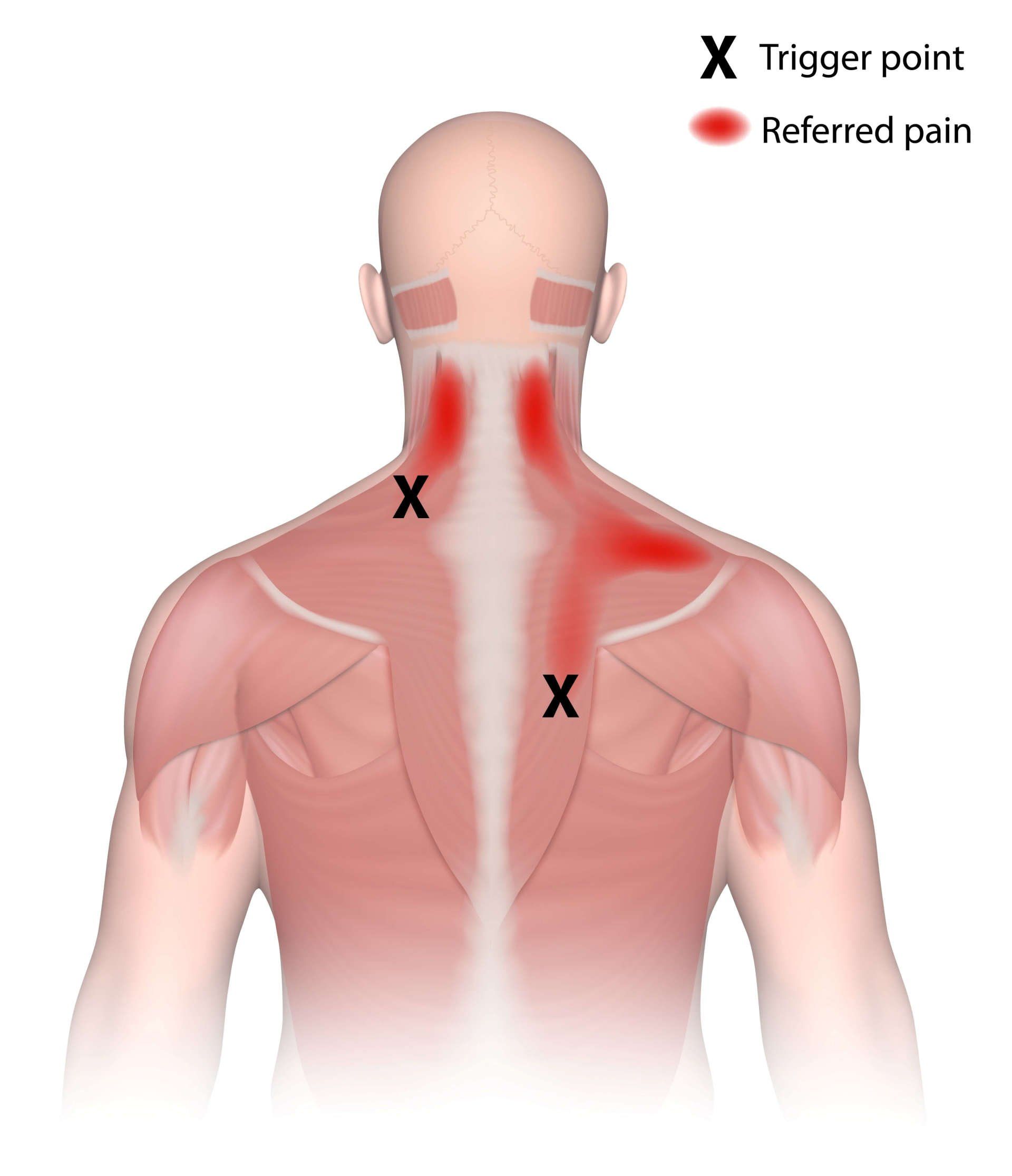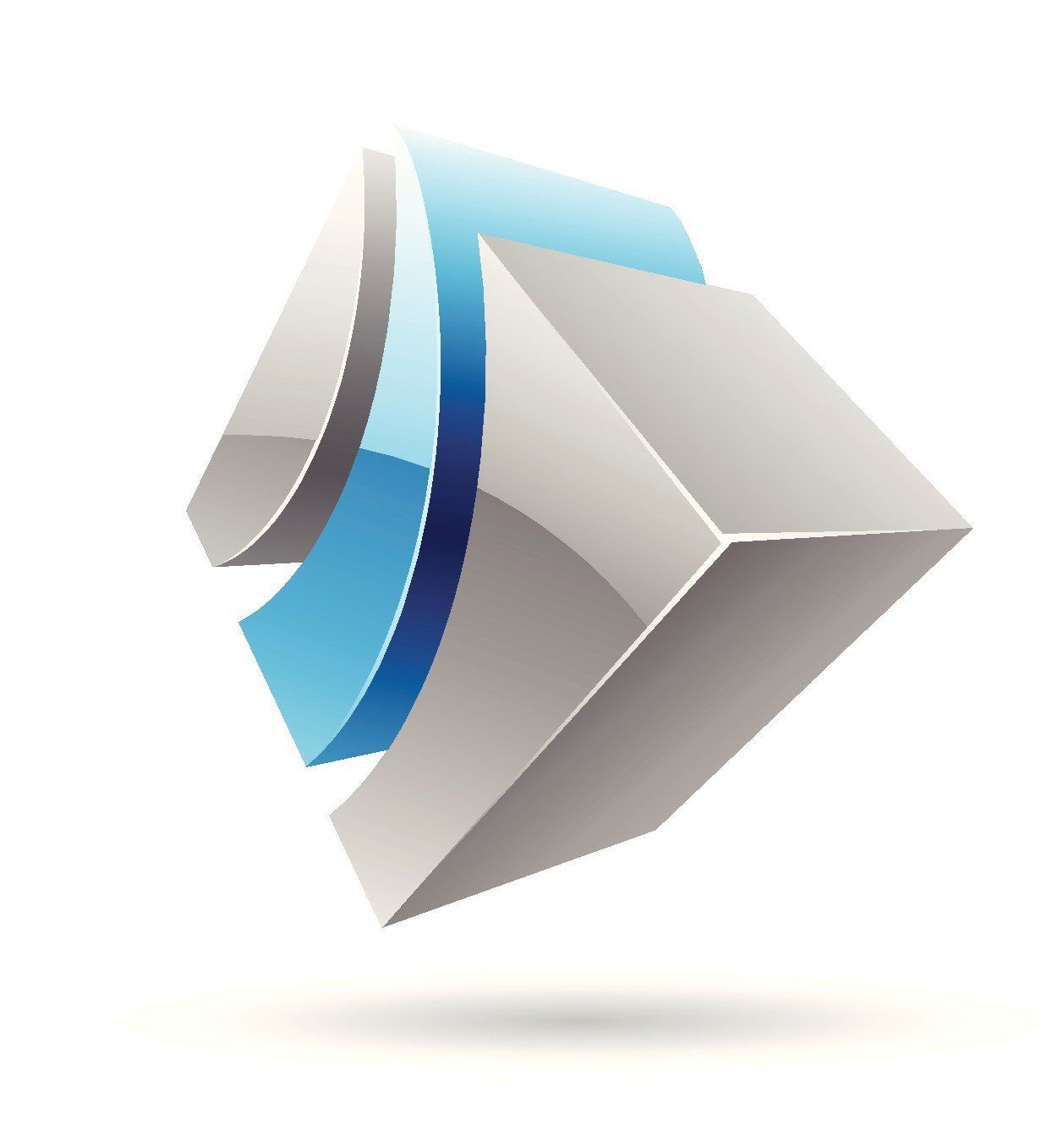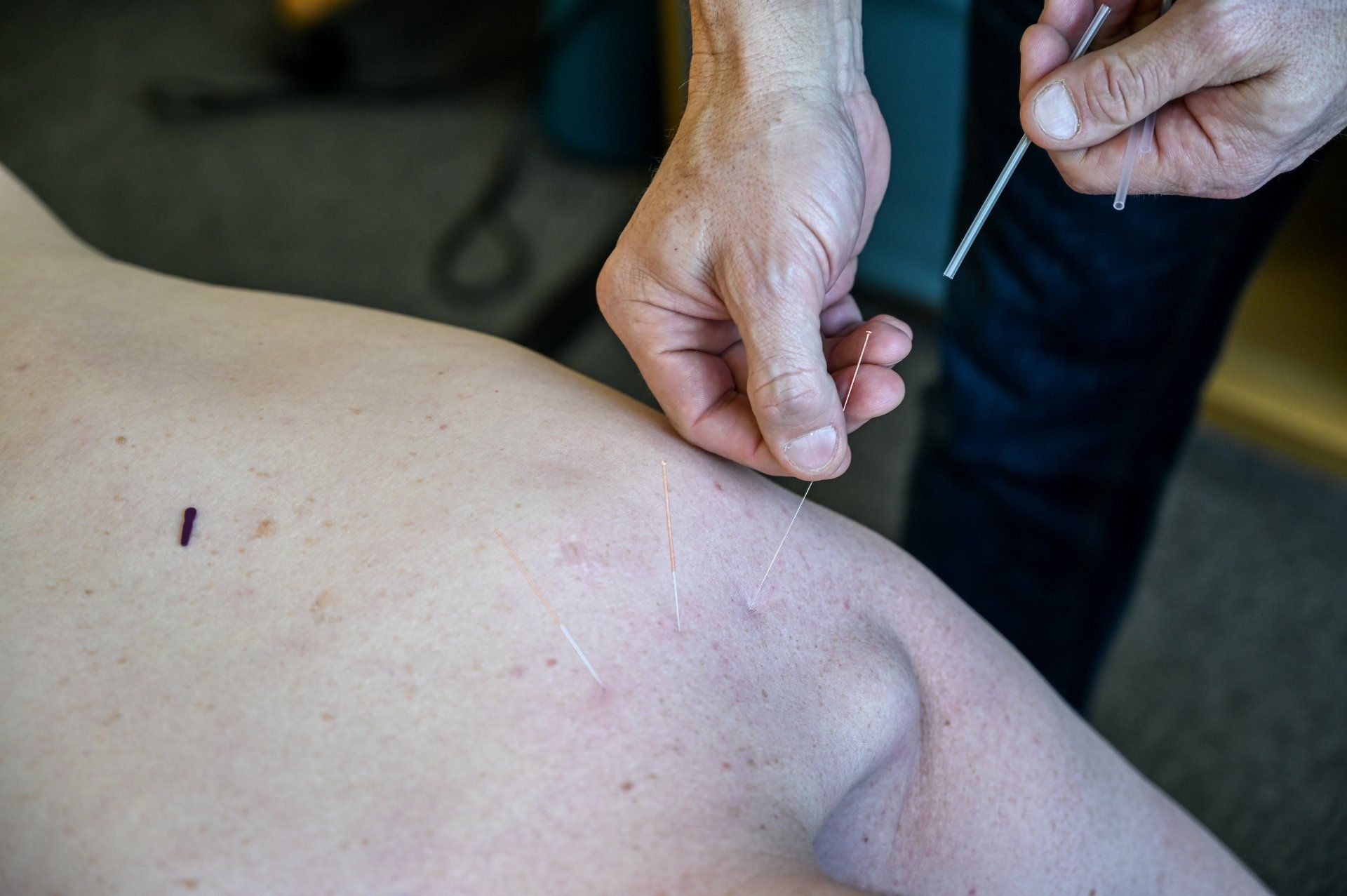Acupuncture in Swindon and Faringdon
Medical acupuncture can be used as a standalone treatment, or as part of a Chiropractic or Rehabilitation treatment plan.
Book now
Many of Kube Medical’s practitioners have completed additional training in acupuncture - or more specifically, dry needling. Dry needling can be booked as a standalone treatment, or may be used by our practitioners if appropriate, as part of their regular appointments.
All our practitioners who use dry needling are both trained and insured to do so.
What is dry needling?
This approach to muscular pain involves putting single use sterilised needles into specific areas within a muscle, known as trigger points. A trigger point refers to pain in other areas of the body.
For example, often patients with arm pain end up having treatment around the shoulder or neck as it’s the rotator cuff muscles which refers pain down the arm. Similarly, often patients reporting headaches have a trigger point in the upper trapezius muscle or around the neck or shoulder, which is referring pain to their head.

What does “dry needling” mean?
The treatment is known as dry needling because there is no liquid in or on the needle. This is in contrast to an injection, where a hypodermic needle is used to deliver a liquid under the surface of the skin.
How does dry needling differ from Traditional Chinese Medicine (TCM) acupuncture?
Dry needling is not the same as TCM acupuncture. Where dry needling is focused on the muscular system, TCM acupuncture is focused on energy flow and meridian lines. Kube Medical does not offer TCM acupuncture.
What does dry needling feel like?
Your practitioner will choose the lengths of the needles, based on the depth of the trigger point they are targeting. They will typically use three to five needles per treatment.
Needles are single use. Each needle comes in a guide tube within a sterile blister pack. They will remove the needle in its tube from the pack, place the point end of the tube against the skin, and tap the head of the needle to insert it. Then they will lift the tube away and dispose of it, leaving the needle in the skin.
When the needle is inserted, patients will usually feel a small pinch, followed by a dull ache around the needle. The ache is caused by the muscular contraction at the trigger point. As the contraction subsides, so does the ache. The practitioner may choose to restimulate the area by gently twiddling the needle, which can reinitiate the ache. At the end of the treatment, the needles are removed, which is painless.
The thought of needles can make some individuals nervous. However, considering three acupuncture needles can fit in the hole of a standard injection needle, many patients previously nervous of acupuncture find it far less painful than they might have anticipated.
Is dry needling effective?
Evidence for the effectiveness of dry needling is limited. However, evidence does show that dry needling is effective both as a standalone treatment and as part of a broader treatment plan, supporting other therapies. Among these, a 2005 Cochrane review of randomised controlled trials showed that acupuncture was more effective than no treatment when treating chronic lower back pain.


